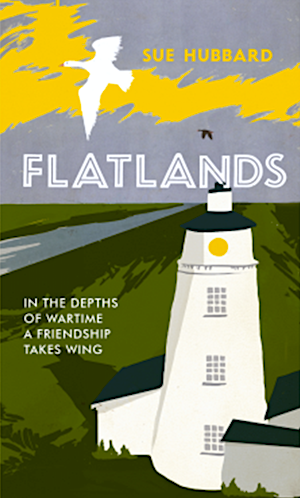For many, it’s as much a part of the summer to-do list as Glyndebourne or Wimbledon. The RA’s Summer Exhibition attracts big crowds. For artists, it’s an anxious time waiting to see if their work has been accepted. This year the exhibition has been coordinated by the British artist David Remfry RA, along with the help of the Summer Exhibition Committee, and the feel is different from previous years. Figuration dominates, and there’s a note of nostalgia in the hang that replicates a salon style, with tiers of paintings almost up to the ceiling. It feels as if we are stepping back in time, as though Grayson’s shocking pink walls had never graced the galleries of Piccadilly.
Figuration dominates, and there’s a note of nostalgia in the hang
The title, Only Connect, is, Remfry says, a quote from E.M Forster’s Howards End, where it denotes a connection between the spiritual and the everyday. Though Remfry uses it as an indication of the connection between oneself and everything else. Richard Long’s One Thing Leads to Another Everything is Connected covers the first wall and faces Anthony Wishaw’s abstract mixed media painting Yellow Moving to Green. Whilst the dense, largely figurative hang in the gallery depicts people and places. Sitting in the middle is Darcey Fleming’s playful chair, handwoven from off-cuts of highly coloured recycled bailing twine like something shaggy and nearly alive.

In the next room, curated by Bill Jacklin, colour dominates with three large Michael Craig Martin’s. While Ron Arad RA’s sweety-coloured, transparent crystalline resin chair, Big East Mixing Red and Transparent, commands centre stage.
The Large Western Room, curated by Peter Barber, is mostly given over to architecture. As well as the architectural maquettes, many in natural materials such as wood and ply, it’s the sculptural works that dominate. The Tree and the Truss, conceived by Design+Make, and two towering, visceral sculptures by the late Phyllida Barlow.
The Small Weston Room – once the home of cat paintings – is very minimal, with only three works. A powerful collaged video by the invited artist Lorna Simpson, Walk with Me, depicts Black womanhood and a playful ‘lampshade’ hanging from the ceiling by the Honorary Academician Pipilotti Rist. The third piece is Bill Woodrow Spitnuk, an infinite-loop NFT, which is a first for both the artist and the Summer Exhibition.
There is, of course, a lot of work by the Academicians. Easy favourites like Eileen Cooper’s figures and the dream-like scenarios of Mick Rooney. These are contrasted with more gritty paintings such as Tony Bevan’s stark skeletal trees in oxblood red. Again, figuration dominates as in the work of invited artists Anne Rothenstein and Caroline Walker. While the powerful black and white work on paper by Kara Walker Hon RA, The Omicron Variations, packs a punch.
Despite Ryan Gander’s curiously named Rest in Pieces, or the Squatters (Charlie Meet Hammons’ Untitled (Night Train) (1989) – an animatronic ‘stuffed’ cat that appears to be breathing, there’s a 1950s kitchen sink feel to this room with paintings of a urinal by Thomas Wright, an outside toilet by A Lincoln Taber, and a stuffed black bin bag by Christopher Campbell. A huge woodcut by Jake Garfield in the first print gallery, curated by Katherine Jones RA, is Man Wrestling an Angel. Though, I have to admit, it rather made me think of Lytton Strachey dancing with Ottoline Morrell. In the second print room, Eileen Cooper has mixed work from the open submissions with that by Academicians. These include rather sumptuous gold floral lithographs by Stephen Chambers on black and white paper.

Clare Woods RA has concentrated on still life and how artists deal with the subject today. This includes two vitrines, one displaying work by Edmund de Waal, Five Stone Wind (For John Cage) and Emma Carlow’s Moments from 365 Days of Whistling. There’s also a long-standing tradition to remember Academicians who have recently died. Dominating this gallery, which includes work by the late Ken Howard and Brian Catling, is Oratorio by Dame Paula Rego, a wooden cabinet with side panels made up of eight paintings (conté pencil on paper) and eight figures, like some great altarpiece for a Portuguese church.
The sculpture gallery has been hung by Tim Shaw RA and includes two arresting works by Carlos Zapata, Bog Man, made of canvas sacking, which evokes the poems of Seamus Heaney and Giles Walker’s disturbing animatronic child with a head hidden by a sack entitled, It Takes a Village to Raise a Child that explores boundaries between humans and machines. In the Wohl Central Hall, we’re presented, quite literally, with a final curtain. A Kleinian blue mobile by Richard Malone made of recycled jersey and lycra dominates the space. Entitled: poem in the dark about sadness, filíocht faoi bhrón, as an dorchadas, which the artist describes as ‘a sculpture that centres gesture, personal action and queer working-class Irish and immigrant identities Though, I think, I’d have to stand there a very long time to get that from it, but it is a visually arresting piece.
Overall, there’s nothing here to frighten the horses. There is lots of painting but not much that is abstract or conceptual. There’s some interesting work, but it’s not a Summer Exhibition that will set the art world on fire or get up any noses. It’s really all quite polite.
Visit Here
Sue Hubbard is a freelance art critic, award-winning poet and novelist. Her new novel, Flatlands is out this month from Pushkin Press. It can be ordered here
Flatlands by Sue Hubbard | 9781911590743 | Pushkin Press

Tags
Royal Academy Of Arts, Summer Exhibition
